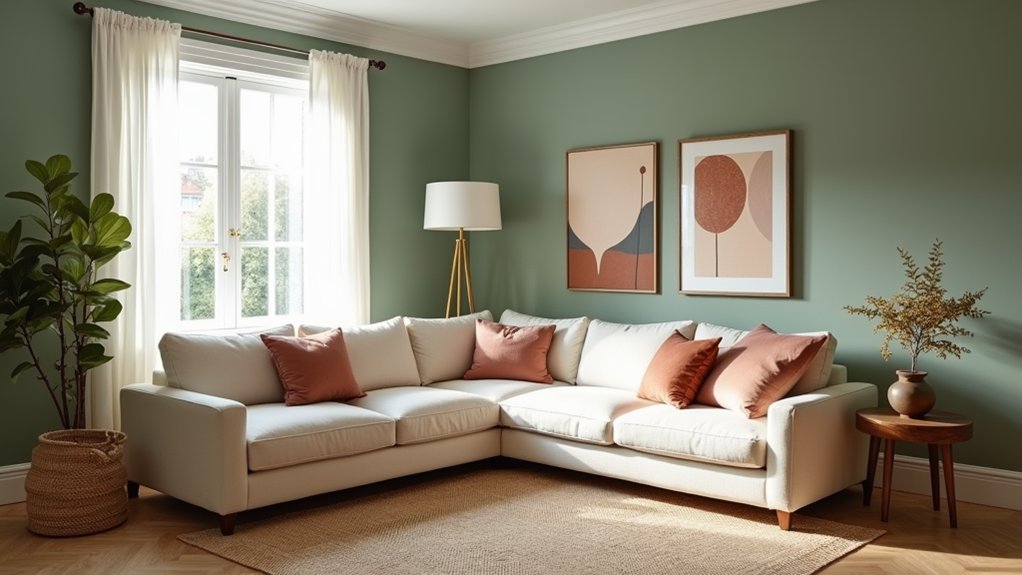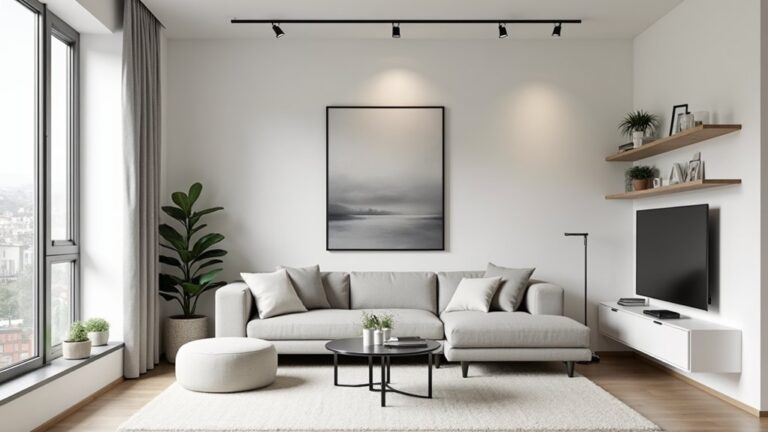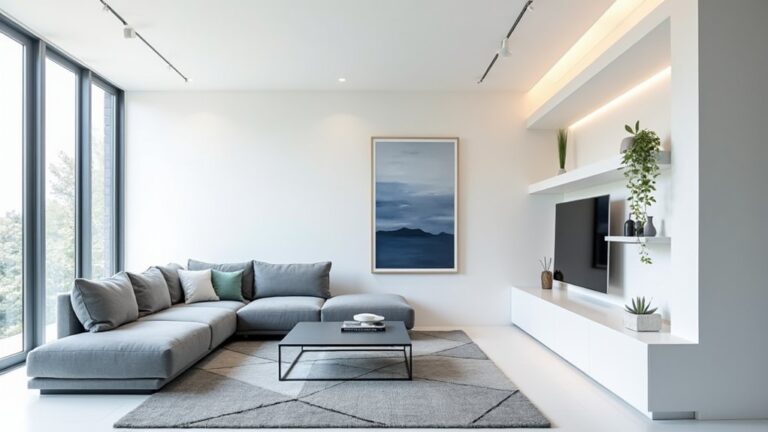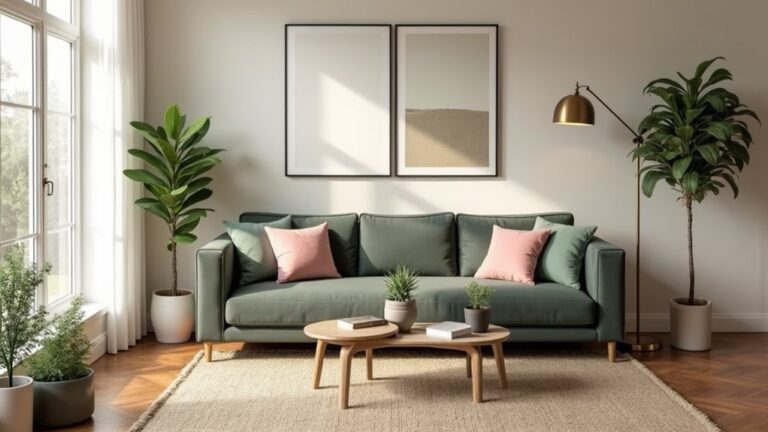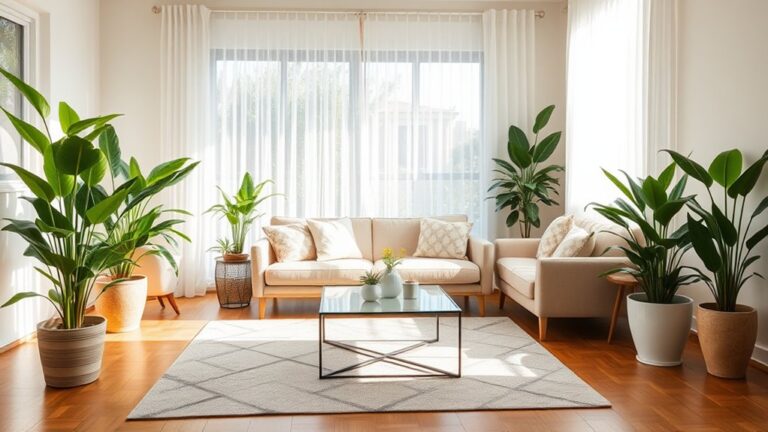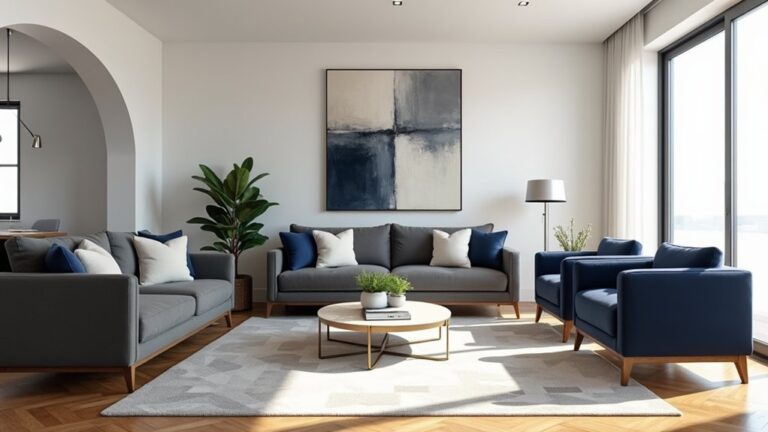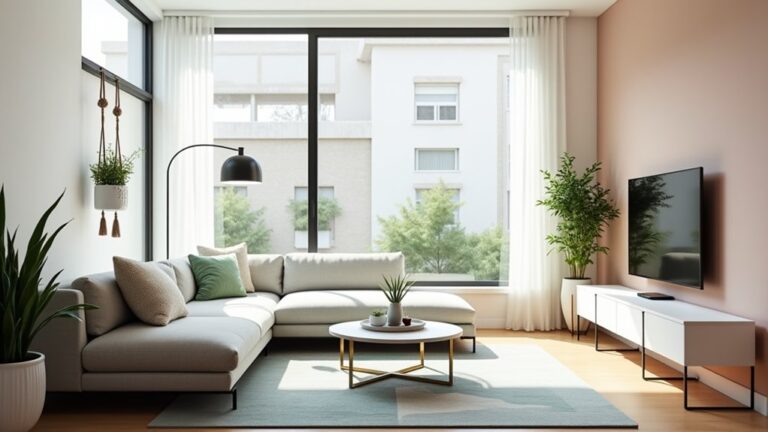Selecting the perfect living room color scheme starts with understanding fundamental color theory and current design trends. Popular combinations like sage green with warm neutrals or navy with gold create sophisticated spaces, while classic pairings of cream and deep brown offer timeless appeal. Consider your room's existing elements, including architectural features and natural lighting conditions, which substantially impact color perception. Testing large swatches under various lighting conditions for at least 48 hours guarantees confident color selection. Strategic placement of lighter and deeper tones creates visual balance throughout the space. The journey to your ideal color scheme reveals valuable insights about transforming your living space.
Key Takeaways
- Test paint samples on multiple walls and observe them for 48 hours under different lighting conditions before making final decisions.
- Consider existing architectural features, permanent furnishings, and flooring when selecting your color scheme to ensure cohesion.
- Balance room lighting by using lighter colors in darker areas and deeper tones in well-lit spaces.
- Choose proven combinations like sage green with neutrals, navy with gold, or charcoal with blush pink.
- Apply color theory principles by selecting complementary, analogous, or monochromatic schemes for a harmonious living space.
Understanding Color Theory Basics
How do you create a harmonious living room color scheme that stands the test of time?
It starts with mastering fundamental color theory. Understanding the relationship between primary, secondary, and tertiary colors on the color wheel establishes the foundation for Color Harmony. These Design Principles guide the selection of complementary, analogous, or triadic combinations, ensuring a balanced and visually appealing space. For a serene atmosphere, consider incorporating monochromatic color schemes inspired by Scandinavian minimalism into your living room design.
Popular Living Room Color Combinations
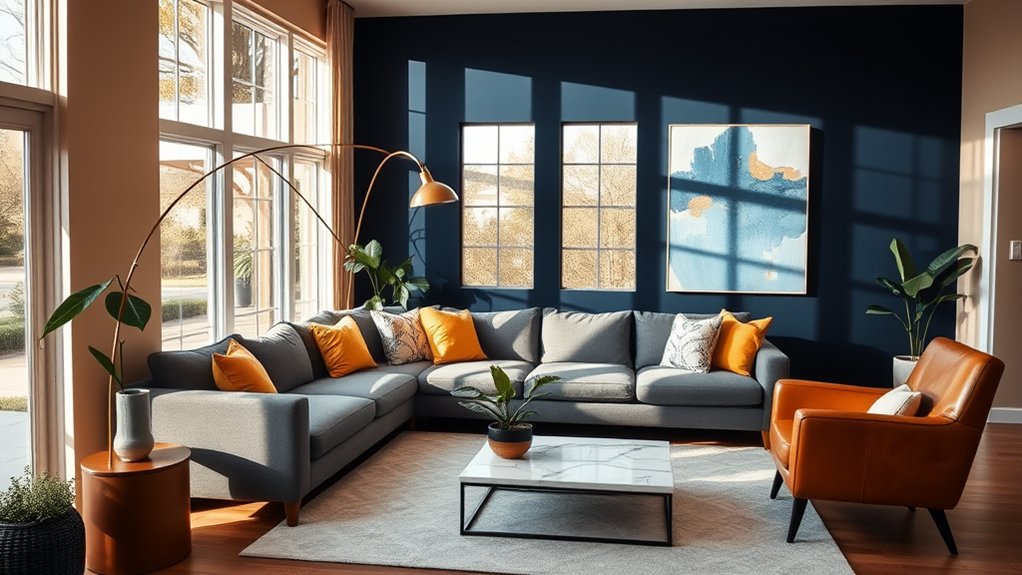
Interior design trends consistently favor certain living room color combinations that deliver both aesthetic appeal and lasting style.
Current color trends embrace sage green paired with warm neutrals, navy blue with gold accents, and charcoal gray with blush pink.
For timeless room decor, designers often recommend classic combinations like cream with deep brown or soft gray with crisp white.
Earthy tones and pastels create a serene environment that promotes tranquility while allowing for bold accent pieces to add character.
Working With Existing Room Elements
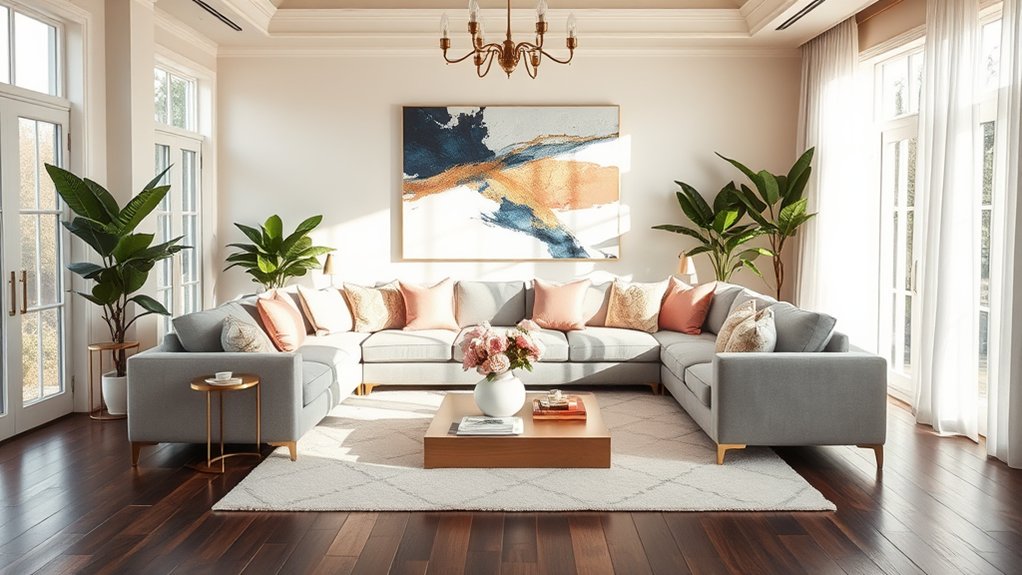
When selecting a new color scheme for your living room, three key existing elements must be carefully considered: architectural features, fixed furnishings, and natural lighting conditions.
Evaluate permanent elements like flooring, built-ins, and structural details first.
Your furniture style and existing decor pieces should inform color choices, ensuring cohesion.
Factor in how natural light affects color perception throughout the day to achieve ideal results.
Consider incorporating soft pastel tones like dove grey or vanilla cream to maximize the perception of space and light reflection.
Testing Colors Before Committing
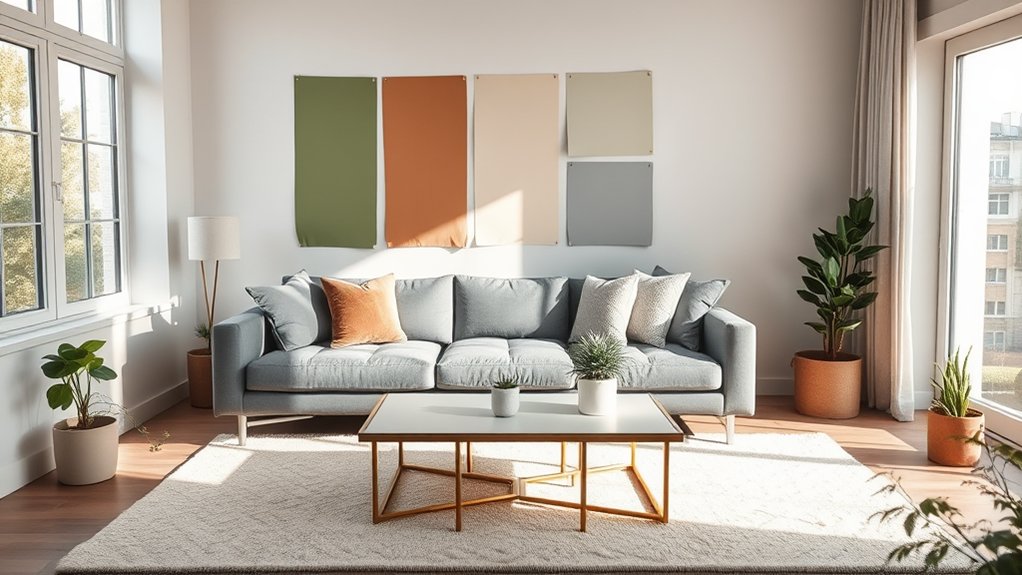
Testing paint colors involves several critical steps before making a final commitment to your living room's new palette.
Begin by collecting color samples and paint swatches from various manufacturers.
Apply large test patches to different walls, as lighting changes throughout the day affect how colors appear.
Observe these samples for at least 48 hours under various lighting conditions before finalizing your selection.
Balancing Light and Color Flow

Natural light plays a pivotal role in establishing a harmonious color flow throughout your living room space.
When planning color placement, consider how sunlight moves across the room during different times of day.
Position lighter hues where natural lighting is limited to brighten dark corners, while using deeper tones in well-lit areas to prevent glare and create visual balance.
Frequently Asked Questions
How Often Should I Update My Living Room's Color Scheme?
While color trends evolve every 3-5 years, updating your living room's color scheme should align with your personal preferences and lifestyle changes, typically warranting a refresh every 5-7 years for maximum impact.
What Paint Finishes Work Best for Hiding Wall Imperfections?
Flat or matte finishes effectively conceal wall textures and imperfections, while eggshell and satin paint sheens offer a subtle balance between camouflaging flaws and providing washable durability.
Can I Use the Same Color Scheme Throughout My Entire Home?
Color consistency throughout a whole house creates cohesion, but consider subtle variations or complementary hues in different rooms to maintain visual interest while preserving an overall harmonious flow.
How Do Seasonal Changes Affect My Chosen Living Room Colors?
Like nature's ever-changing canvas, seasonal shifts dramatically affect interior colors through varying natural lighting patterns, impacting color psychology and potentially altering your room's mood from warm to cool throughout the year.
Are There Specific Colors That Make Cleaning and Maintenance Easier?
Neutral tones like greige, taupe, and warm gray offer superior color neutrality while masking daily wear. Dark charcoal and navy provide excellent stain resistance, making maintenance more manageable in high-traffic living spaces.
Conclusion
When it comes to nailing down a living room color scheme, success lies in mastering the fundamentals while staying current with design trends. Strategic color selection, grounded in color theory and balanced with existing elements, creates spaces that stand the test of time. Through careful testing and consideration of natural light patterns, homeowners can craft living rooms that flow seamlessly from season to season, delivering both aesthetic appeal and practical livability.

